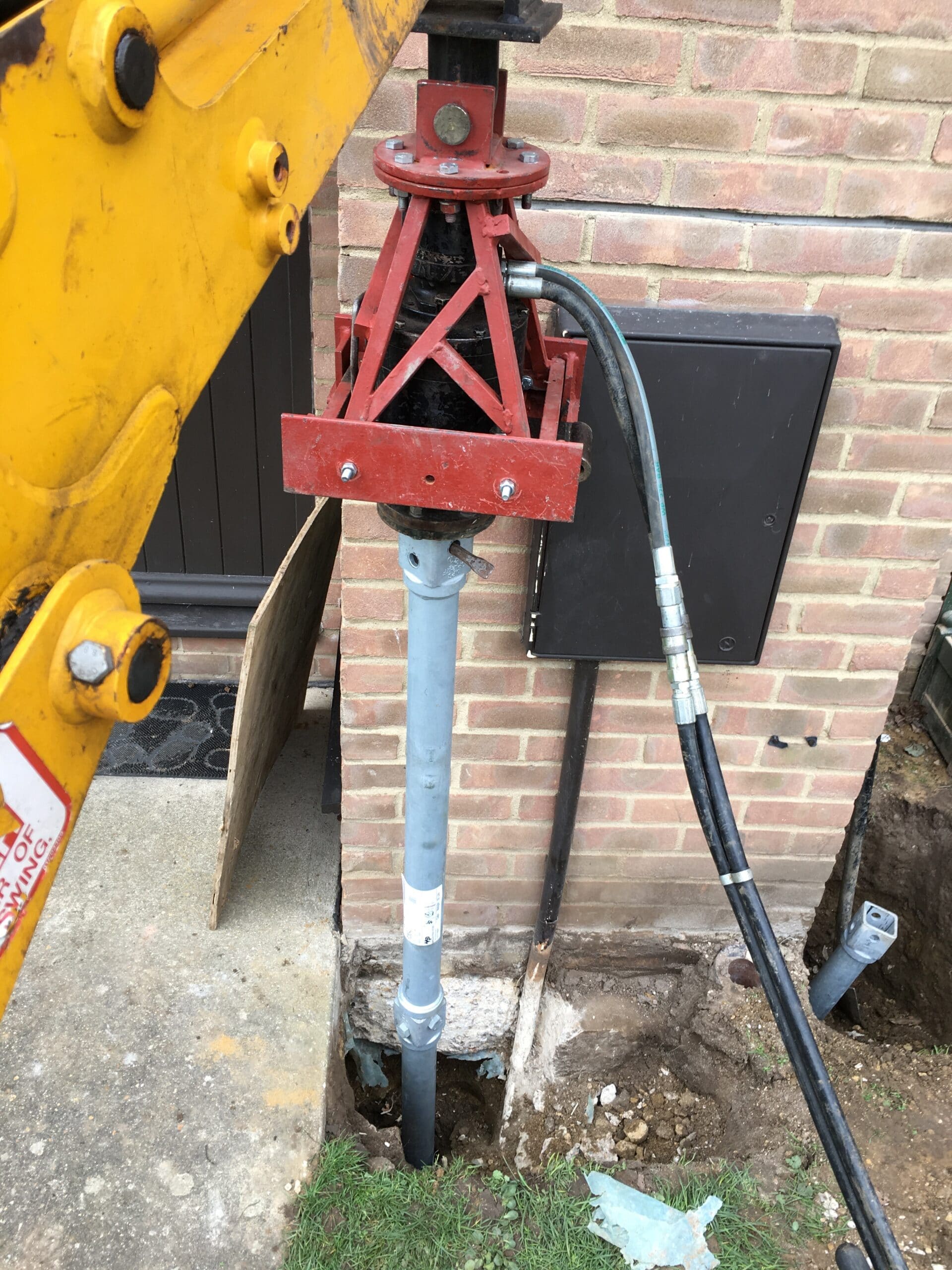
16 Jul How Does Screw Piling Work?
Piling is a widely used technique, both for creating and strengthening the foundations of structures from domestic homes to major infrastructure projects. There are many different approaches to inserting the piles, and the various names can be confusing. Screw piling is one type that’s used for many projects. So what is screw piling, and how does it work?
What Are Screw Piles?
Like other types, screw piles are steel shafts inserted into the ground, in segments joined together, which are then filled with concrete or grout to support the structure above. The structure rests on the piles, which transfer its weight down through weaker materials to a level of either solidly compacted earth or bedrock which will support it.
Whereas many types are augured straight down through the earth, screw piles (also known as helical piles) are wound into the ground in very much the same way that a screw is wound into a piece of wood.
How Do Screw Piles Work?
Screw piles are hollow steel shafts with helices attached to the outside. The size and number of helices used may depend on a variety of factors, including the total load and the condition of the soil.
Screw piles are wound into the ground by means of various sizes of standard earthmoving equipment fitted with rotary hydraulic powerheads that have torque capacities calculated to fit the needs of the job. When the piles are all in place, they are filled with concrete or grout and attached to the structure they’re supporting.
Why is Screw Piling Used?
Screw piles have been in use for nearly two hundred years, and they’ve traditionally been used for building roads and railways, as well as other major engineering projects. Their major advantages here are that they can be installed quickly and that they can be used when building close to other structures.
Increasingly, though, screw piling has come to be used in various contexts for domestic homes, applied to anything from sheds and decking to preformed stairs. Like other forms of piling, they can be used as an underpinning solution.
The big advantage of screw piling is that it’s quicker and easier to install than other types of piling. The relatively small amount of equipment used also gives easier access to confined spaces. In addition, however, the screw piling process involves less soil displacement than other methods, and this means less soil to dispose of, reducing both the cost and the carbon footprint of the project.
Get in touch with U&M to find out whether screw piling is the ideal solution for your project.




